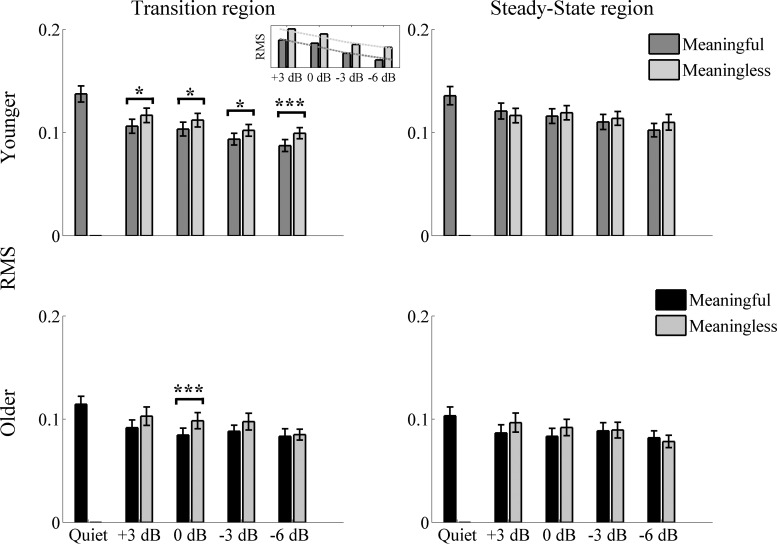Fig. 3.
RMS values ± 1 SE for younger (top) and older (bottom) adults in the transition (left) and steady-state (right) regions for all of the noise levels tested. Different informational content of noise affects only the transition response and mainly in younger adults. A significant effect of the different informational content of noise was seen only in the transition region in all of the noise levels tested in younger adults (P < 0.05 at +3, 0, and −3 dB, and P < 0.001 at −6 dB) and only at 0 dB in older adults (P < 0.001). Significantly higher RMS values in younger adults than in older adults in all of the noise levels tested were found only in the steady-state region. Inset: for the transition region in younger adults, separate linear fits to the RMS for both types of noise reveal a 4.6-dB SNR (horizontal shift between the dashed best-fit lines) advantage for meaningless noise over meaningful. *P < 0.05, ***P < 0.001.

